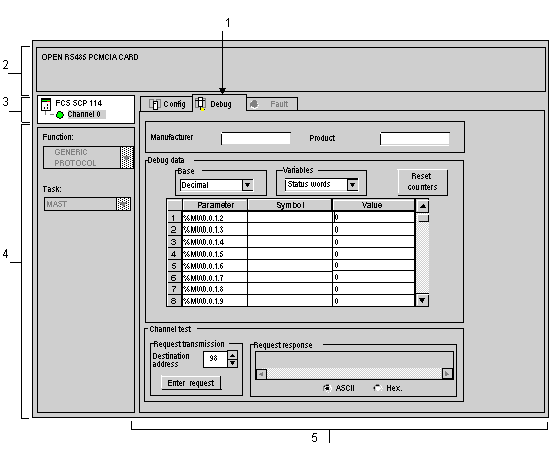|
Debugging a Specific Protocol Communication
|
|
|
(Original Document)
|

|
Number
|
Element
|
Function
|
|---|---|---|
|
1
|
Tabs
|
The tab in the foreground indicates the mode in progress (Debug in this example). Each mode can be selected using the respective tab. The available modes are:
|
|
2
|
Module area
|
Specifies the abbreviated heading of the module.
|
|
3
|
Channel area
|
Is used:
|
|
4
|
General parameters area
|
Shows the communication channel parameters:
|
|
5
|
Viewing and control area
|
It is used to:
|